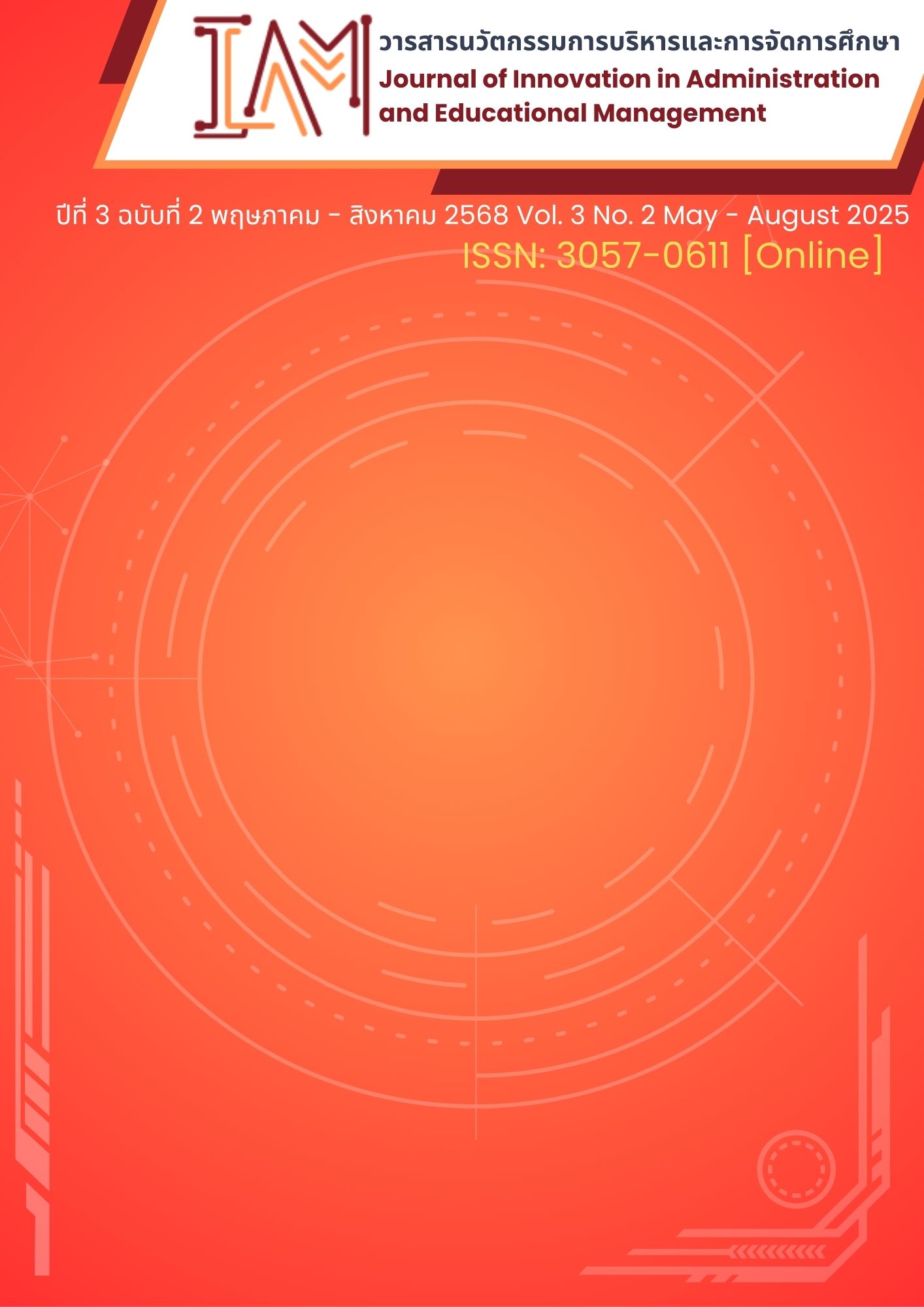Theory of Sample Size Determination and Key Informant Characteristics in Qualitative Research
Keywords:
sample size determination, qualitative research, key informantsAbstract
This article aims to study (1) the theories regarding the determination of the sample size of key informants in qualitative research, (2) the characteristics of key informants in qualitative research, and (3) the selection process of key informants in qualitative research. Selecting key informants, or participants, in qualitative research is a process that requires integrating both the science and art of the researcher. Qualitative research focuses on understanding specific phenomena within particular groups, events, or processes. Researchers must prioritize selecting key informants based on alignment with the research objectives. Moreover, qualitative research seeks to uncover information unique to specific groups. Therefore, researchers must consider criteria for selecting key informants, such as ensuring alignment with the research objectives. Key informants should provide sufficient insights to comprehensively and fully explain the phenomenon under study. Findings derived from the selection of key informants should lead to clear conclusions, with data that is reliable, credible, and adheres to ethical research principles. Furthermore, the selection of key informants must be strategically planned. This article proposes a theory for determining the size and characteristics of key informants in qualitative research, based on the author’s concepts. It includes methods for selecting key informants that have been studied, tested, and presented by scholars and researchers, along with related research on determining key informant sample sizes in qualitative studies.
Downloads
References
ญดา เจนจาฏุพัฒน์. (2563). แนวทางการบริหารจัดการศูนย์การเรียนรู้ทางการศึกษาปฐมวัยเอกชนเพื่อมุ่งสู่เกณฑ์มาตรฐานของกระทรวงพัฒนาสังคมและความมนคงของมนุษย์. (วิทยานิพนธ์ปริญญาดุษฎีบัณฑิต). กรุงเทพฯ: มหาวิทยาลัยศรีปทุม.
ฐะปะนีย์ ไตรญาณ. (2563). แนวทางการบริหารสำหรับการสร้างนวัตกรรมในโรงเรียนตามแนวทางคุรุสภาของโรงเรียน สังกัดสำนักงานคณะกรรมการส่งเสริมการศึกษาเอกชน. (วิทยานิพนธ์ปริญญาดุษฎีบัณฑิต). กรุงเทพฯ: มหาวิทยาลัยศรีปทุม.
ธีรพงษ์ ชูนาค. (2567). แนวทางการบริหารจัดการภาวะวิกฤตของสถานศึกษาในเขตพื้นที่
การศึกษาประถมศึกษานครศรีธรรมราช เขต 3. (วิทยานิพนธ์ปริญญาดุษฎีบัณฑิต). กรุงเทพฯ: มหาวิทยาลัยศรีปทุม.
ประทีป ไชยเมือง. (2565). แนวทางการพัฒนาภาวะผู้นำเชิงนวัตกรรมของผู้บริหารสถานศึกษา
ระดับมัธยมศึกษา สังกัดสำนักงานคณะกรรมการการศึกษาขั้นพื้นฐาน. (วิทยานิพนธ์ปริญญาดุษฎีบัณฑิต). กรุงเทพฯ: มหาวิทยาลัยศรีปทุม.
ประไพพิมพ์ สุธีวสินนนท์ และประสพชัย พสุนนท์. (2559). กลยุทธ์การเลือกตัวอย่างสำหรับการวิจัยเชิงคุณภาพ. วารสารปาริชาต มหาวิทยาลัยทักษิณ, 29(2), 31 - 48.
พลพิพัฒน์ วัฒนเศรษฐานุกุล. (2566). แนวทางการบริหารที่ส่งเสริมความสำเร็จของโรงเรียนสิ่งแวดล้อมศึกษาเพื่อการพัฒนาที่ยั่งยืน สังกัดสำนักงานเขตพื้นที่การศึกษามัธยมศึกษากรุงเทพมหานคร เขต 2. (วิทยานิพนธ์ปริญญาดุษฎีบัณฑิต). กรุงเทพฯ: มหาวิทยาลัยศรีปทุม.
ศิวาพัชญ์ บำรุงเศรษฐพงษ์. (2563). ตัวแบบการพัฒนาคุณลักษณะด้านดิจิทัลสำหรับผู้บริหารสถานศึกษาระดับมัธยมศึกษา สังกัดสำนักงานคณะกรรมการการศึกษาขั้นพื้นฐาน. (วิทยานิพนธ์ปริญญาดุษฎีบัณฑิต). กรุงเทพฯ: มหาวิทยาลัยศรีปทุม.
สุทธิพงศ์ เสมสูงเนิน. (2566). กลยุทธ์การบริหารโรงเรียนผู้สูงอายุตามแนวคิดการพัฒนาคุณภาพชีวิต. (วิทยานิพนธ์ปริญญาดุษฎีบัณฑิต). กรุงเทพฯ: มหาวิทยาลัยศรีปทุม.
Miles, M. B. & Huberman, A. M. (1994). Qualitative data analysis: An expanded sourcebook (1th ed.). New York: Sage Publications Inc.
Monique, H. & Bonnie, N. K. (2022). Sample sizes for saturation in qualitative research: A systematic review of empirical tests. Social Science & Medicine, 29(2), 114523 - 114531.
Saunders, M., Lewis, P. & Thornhill, A. (2012). Research Methods for Business Students (3rd ed.). Harlow: Pearson Education Ltd.
Downloads
Published
How to Cite
Issue
Section
License
Copyright (c) 2025 Journal of Innovation in Administration and Educational Management

This work is licensed under a Creative Commons Attribution-NonCommercial-NoDerivatives 4.0 International License.






